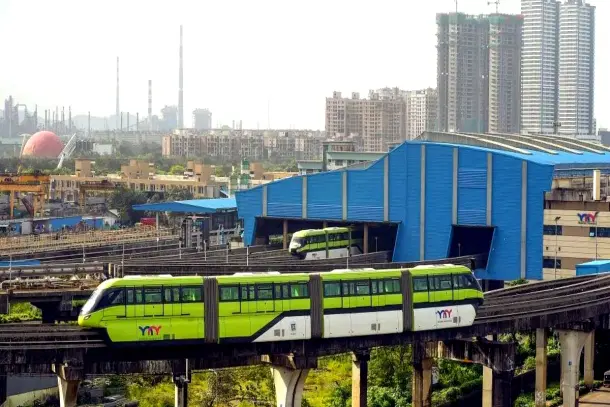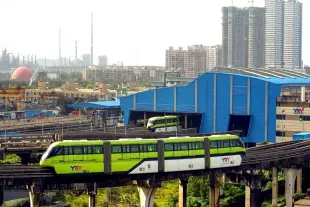Infrastructure
Mumbai Monorail: MMRDA Begins Trials For New High-Capacity Rakes, To Improve Frequency
V Bhagya Subhashini
May 21, 2024, 12:07 PM | Updated 12:07 PM IST
Save & read from anywhere!
Bookmark stories for easy access on any device or the Swarajya app.


The Mumbai Metropolitan Region Development Authority (MMRDA) has initiated trials for a new monorail rake delivered last month by Hyderabad-based Medha Servo Drives Ltd.
Each 4-car train, costing around Rs 59 crore, is undergoing dynamic trials to ensure the monorail's readiness, safety, and efficiency before entering public service. Currently, seven rakes are operating the monorail, of which two are kept on standby.
The introduction of 10 new monorail trains could significantly increase service frequency, potentially exceeding 250 trips per day, depending on the train operation plan (TOP). Once the trials are approved by safety authorities, including the Commissioner of Railway Safety, the new trains will be deployed for passenger service.
These trials, which began last week test the monorail's performance under various conditions. The primary objectives are to identify and resolve any issues, ensure compliance with safety standards, and optimise the monorail's functionality.
Initially, the monorail is run through its entire route to assess the integrity of infrastructure elements such as the guideway, stations, and power systems. Engineers monitor the travel smoothness and alignment, conducting stress tests to confirm the monorail's capability to handle real-world operations.
In addition, comprehensive tests of the monorail’s control and communication systems are being carried out to verify the reliability of automated controls, signalling, and communication between the train and control centres.
Safety systems, including emergency brakes and evacuation procedures, are rigorously tested to ensure they function correctly in emergencies. Data collected during these trials will help fine-tune the system.
The new rakes feature advanced bogies, signalling, and propulsion systems, enhancing ride quality, safety, and reliability over existing models. They also have a 10 per cent higher passenger capacity, accommodating around 625 passengers per train compared to the current 568.
Safety improvements include the use of fire-resistant materials that can withstand fire for 45 to 60 minutes, up from the current 30-minute resilience, reports Economic Times.
With the addition of more rakes, commuters can expect significantly improved service frequency, with intervals reduced from the current 25 to 30 minutes to just 5 minutes. This enhancement will greatly improve both reliability and ridership for Mumbai’s monorail system.
Mumbai Monorail Project
Monorail has a daily capacity of 1.5 to 2 lakh commuters and can handle 7,500 commuters per hour in each direction.

The monorail would connect several areas of the city that are not served by the suburban rail system or the metro rail.
Apart from that, Wadala, Curry Road, and Chembur will serve as monorail's connections to the suburban rail network.
V Bhagya Subhashini is a staff writer at Swarajya. She tracks infrastructure developments.





